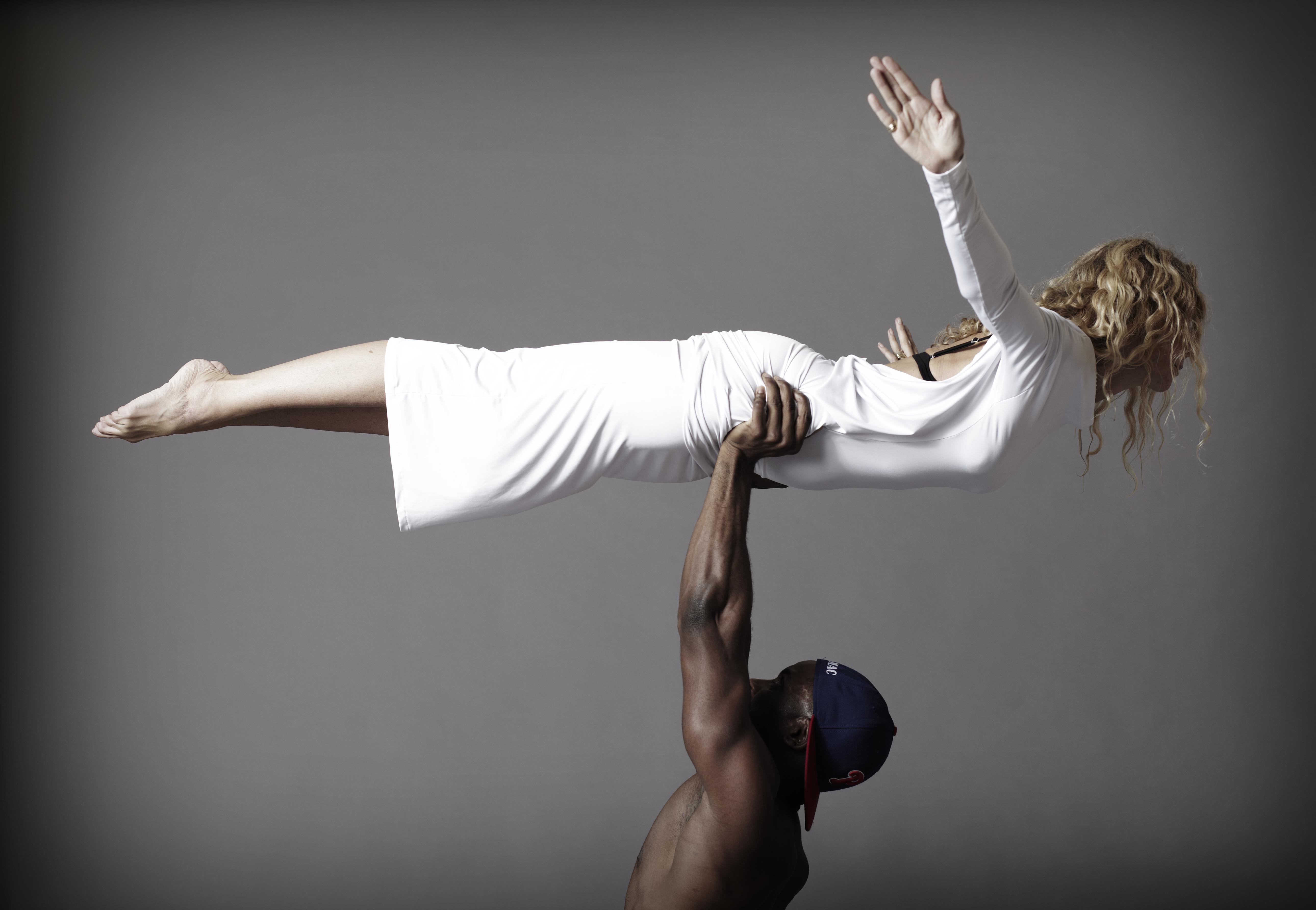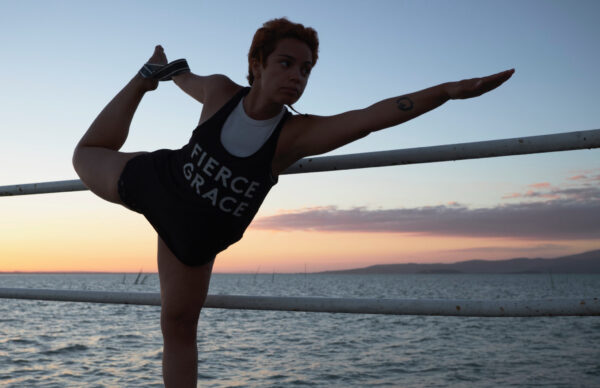Flying abroad has its downsides – DVT, stiffness and tension to name a few. Check out the top Yoga postures to keep yo chilled, mobile and alleviate jet lag.
Summer is here, time to broaden your horizons and go exploring! But, flying at 39,000 can take its toll on our bodies, here are some great yoga postures to keep you chilled and stretched out in the sky.
How can yoga help regular fliers? Which areas of the body can it help relieve stiffness from sitting down for hours on end?
Having a yoga practice is the best preventative for issues to do with flying; the cramp, stiffness, swelling from poor circulation, and even reducing the likelihood of vein issues as the tissues around the veins are soft and open and circulation in general is improved. This is mainly because a yoga practice opens the fascia (the connective tissue) of the body, stretches it and improves general circulation, so that when flying you already have better circulation and lymph drainage.
Then adding a few yoga movements to your flight time will just boost the already healthy functionality your body has. However keeping moving while on a flight can help prevent DVT as well as stiffness and lack of circulation. Yoga stretches can reduce stiffness we can experience in neck, shoulders, legs, hips, lower back and calves and feet.
What other benefits does practising yoga bring?
The benefits of yoga are well documented, but include greater range of motion of the entire body, no more aches and pains, increased strength, stamina, flexibility, and a greater sense of mental and emotional wellbeing. It balances blood pressure, cholesterol levels, burns calories and prevents degeneration and wear and tear on the joints. People don’t realise that nearly every other form of exercise, specifically sports, like running, cycling, football and even the gym, are ageing the joints of the body.
People are obsessed with “cardio” fitness, but at what cost? A healthy heart and good stamina in a crippled body? Yoga is healthy for your joints, while still creating optimum fitness and stamina.
Whatever inconvenience it is to get started in a yoga practice is a tiny fraction of the inconvenience of living in a painful body or being ill.
Yoga is concentrating on the spine as the nervous system is originating from brain via spine to the entire body, so by preventing compression on the discs, the nerves benefit and therefore the entire body’s function. Other benefits are that stretching brings increased blood supply and oxygenation to the body.
Add the mental calmness and sense of vitality and wellbeing yoga brings, are what has made yoga so popular.
Hip opening, knee alignment, strength and flexibility, leg strength and full body integration and are what you should expect from any good yoga class.
What’s special about hot yoga and how does it work?
Hot yoga is taught in a room heated to between 90 degrees to 100 degrees. A reputable studio with well trained teachers will have good oxygenation and humidity, and use properly trained instructors.
The working temperature of your muscles and joints is around 100 degrees, this ensures the synovial fluid is thinned and can move around the joint lubricating it and bring nutrition. The heat warms the muscles and joints to ensure safe stretching. Far more injuries occur by exercising in cold rooms. That’s why all exercise systems have a warm up but hot yoga means your body stays warm throughout. It also means you do not feel stiff the next day. Hot yoga students will all tell you that the heat is emotionally and mentally cathartic. Seeing your body dripping with sweat, breathing deeply, feeling open, and healthy have a positive effect on our mood.
Now that Hot Yoga is mainstream, one can’t be sure exactly what you are going to get. Check your studios credentials or go to a recognised system such as Fierce Grace.
How does it work?
Classical yoga concentrates on the spine, as that is the core of physical wellbeing, hip opening, strength and alignment, leg strength and full body integration. It moves us to our “edge” physically and we press against this edge building flexibility and strength. The beauty of yoga is that it is just the body’s natural range of motion, usually done in static poses, so we can safely improve and strengthen whatever our level. Beginners and advanced alike work together to their own ability.
We have countless students who have reported lower blood pressure and cholesterol from doing hot yoga.
Sweating is the other reason people love hot yoga. It is an important way to detoxify the body, as the skin is the largest organ in the body. It is necessary to make sure we sweat regularly to help remove toxicity from the body.
What’s the best time of day to go to a yoga class?
Everyone is different, and really in our busy lives I would re commend just to go when you can and when fits best into your schedule. It is better to water a plant sometimes, than never. It’s beneficial any time of day. Some people prefer the buzz that a morning class gives them for their day, others love how relaxed it makes them and how well they sleep by going to class after work so they get home de-stressed from their day. If you are low on energy, go in the morning, if you find it hard to relax, go later in the day. Yoga gives you what you need. Traditionally yoga was practiced at sunrise, looking a the sun.
What type of yoga is best to relieve jet lag?
Many people swear by getting off a plane and getting to a yoga class as soon as they can as it seems to have an amazing effect on jet lag. I would recommend after all the rush of getting ready to fly, the body and mind need calming and relaxing, so a gentler class is probably more grounding and relaxing.
Jet lag can make us feel very enervated. Some people love an energising yoga class to get their metabolism kick started and their circulation boosted, others prefer a relaxing one, some deep breathing and centering, to bring them back to a grounded feeling. Either way, getting some movement, deep breathing or stretching to relieve tension is beneficial to speed up the body’s ability to return to it’s normal rhythms.
There is a yoga protocol for jet lag which is to spin (Sufi style twirling) in the opposite direction to which you flew – you stand with your arms out to the sides shoulder height. Your head is North, left hand is East and right hand is West. If you flew East to West you would twirl turning to the left. Spin slowly for about a minute, or as long as you can. It undoes the disturbance to the electromagnetic fields that have been disturbed in your body. There have been scientific studies on this and there is a book written on this by the Adi Da Samraj.
What can long haul passengers do on board to help relieve muscle tension and stiffness?
Some really good exercises are Seated Pigeon, Forward Fold, and Yogi Twists.
For Seated Pigeon you stay seated and place your right ankle across your left knee and let your right knee drop down, it may go as low as parallel with your left. Left foot flat on the floor. Flex your right foot. Lean forward until you feel a stretch through your right hip, buttock and lower back. One can add a twist by placing ones right arm at ones right foot or knee in this position and twisting to the left to release even more tension from the lower back and hip. Repeat on the other side.
For Forward Fold, go to the back of the plane and feet hip width apart bend your knees and fold forward keeping your abdomen and chest touching your legs. Hang down there, you can hold your elbows for a nice release of shoulders. Let your head hang. bend your knees more or less to feel hips lower neck and hamstrings stretch, but keep your abdomen always touching your thighs to protect your lower back.
While at back of plane or inside the washroom, you can place your feet hip width apart, arms at 90 degrees as if you were power walking and with knees only 2” bent you move one hip forward and then the other (as if your pelvis was a record on a turntable being rotated on a horizontal plane) do this fast while you pull your belly in and exhale through the nose once on each swivel. Bring one hip forward then the other, fast until you feel your entire spine moving and twisting. Powerful exhales. This irrigates each vertebra, brings circulation to hips, spine, digestive system, eliminatory system, tones the waist, prevents constipation and loosens, releases tension in your spine and makes you feel energised.


